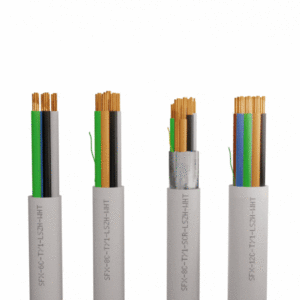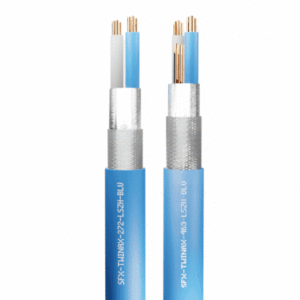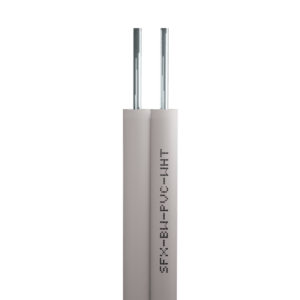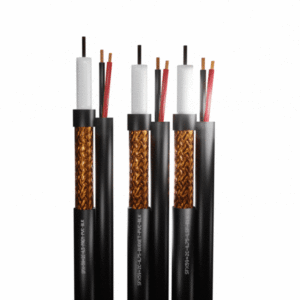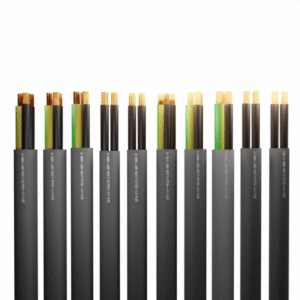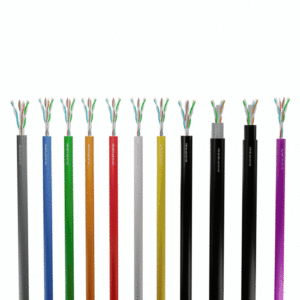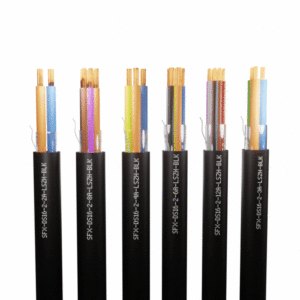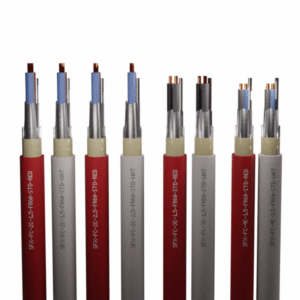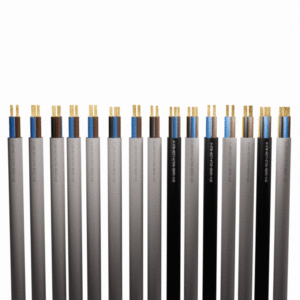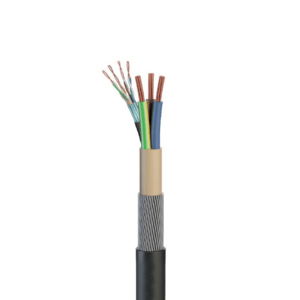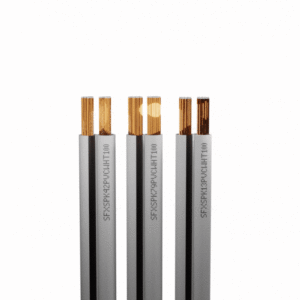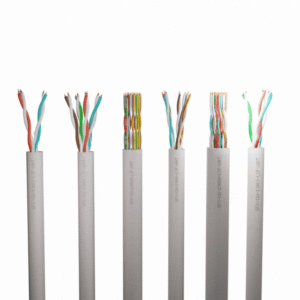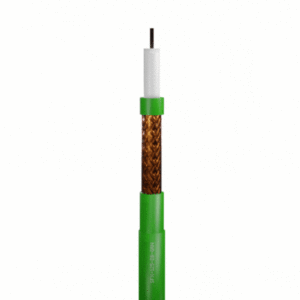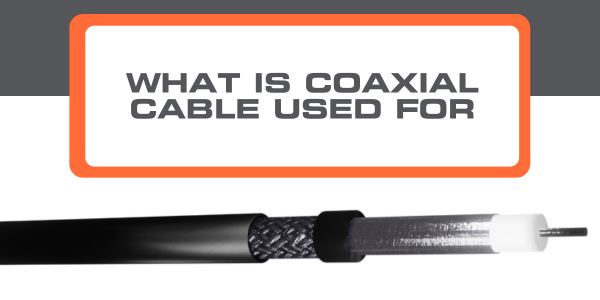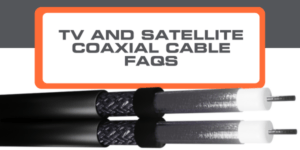What Makes Up A Coaxial Cable?
Coaxial cables are designed in a way that makes them the most suitable and efficient for their most common uses. The make-up of a coaxial cable is as follows:
- The core consists of an inner centre wire conductor
- A layer of insulating plastic is then wrapped around the core
- Wire mesh is then wrapped around the cable for added insulation
- The cable is finished in a rubber jackets or sheath, which prevents signal interference. Coaxial cables often feature sheaths that are UV, chemical, halogen and flame resistant as they’re commonly used in homes so need to be a safe choice for families.
The ends of the coaxial cable will also feature a thin layer of copper that can be screwed into cable boxes and other receiving electronics.
The multiple layers of coaxial cable often result in it producing a thick, round shape – usually, coaxial cables are available in black, white or brown.
Coaxial Cable Uses & Applications
Coaxial cables are used predominantly for transmitting video, data and radio frequency signals, which is what makes them so great for use with TV and satellite connections. Traditionally, coax cables have been used to connect transmitters and receivers with antennas for cable television signals.
The cables can be connected directly from the wall outlet to a television or cable box, making installation in the home easy even for beginners. They can also be used to connect VCRs to television sets, or connecting antennas to television sets too.
Some common coaxial cable types include:
- RG6 Coaxial Cables – these are used primarily for television. Their impedance of 75 Ohm allows them to carry signals more efficiently.
- RG 11 Coaxial Cables – these cables are commonly used for HDTV purposes. Their high-quality signal translates to high-quality picture.
- RG59 Coaxial Cables – these cables are used mostly for CCTV systems as they can run over long distances and are easy to work with.
- RF Coaxial Cables – these are radio frequency cables and are the standard input cable for television – usually supplied with a pin, they can be plugged straight into the input on the device.
Coaxial Cable Advantages & Disadvantages
Advantages
Coaxial cables boast many advantages over other forms of transmission cables.
- They work well at high frequencies
- Can be used when there is poor attenuation
- Their shielding prevents interference
- They’re cost effective
- They can be cut to length, preventing any wasted cable from buying in bulk
- Transfer capacity of 10mbps
These factors make them a great choice for common use in the home.
Disadvantages
Although a great option, coaxial cables aren’t perfect for every installation. Some limitations of the cables that may make them unsuitable for certain projects include the following:
The cables are bulky due to their many layers and cannot be made smaller.
The coaxial screw for installation must match the unit – this can make installation and removal difficult and can require tools
Overall, the positives far outweigh the negatives, making coaxial cables a great cable for a wide variety of uses. For more information, get in touch with our friendly team, or explore our range of coaxial cables here.

